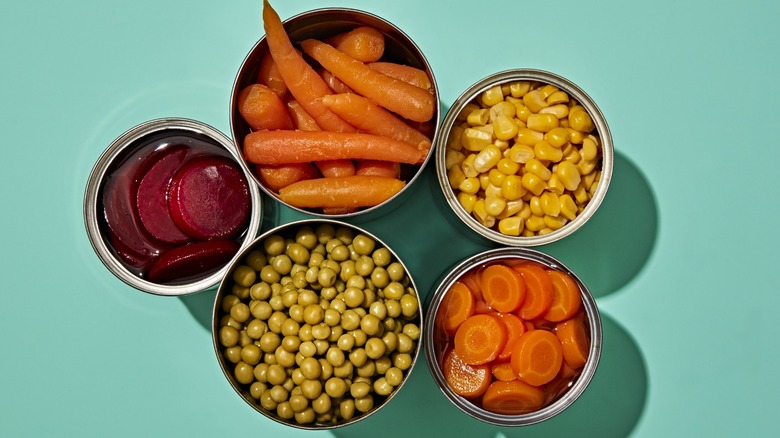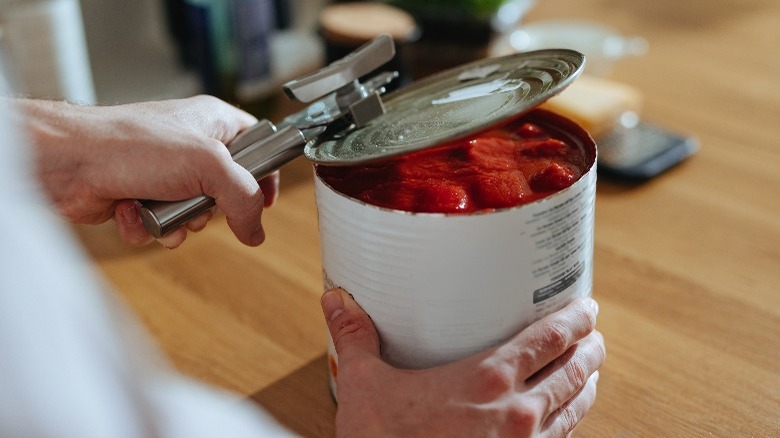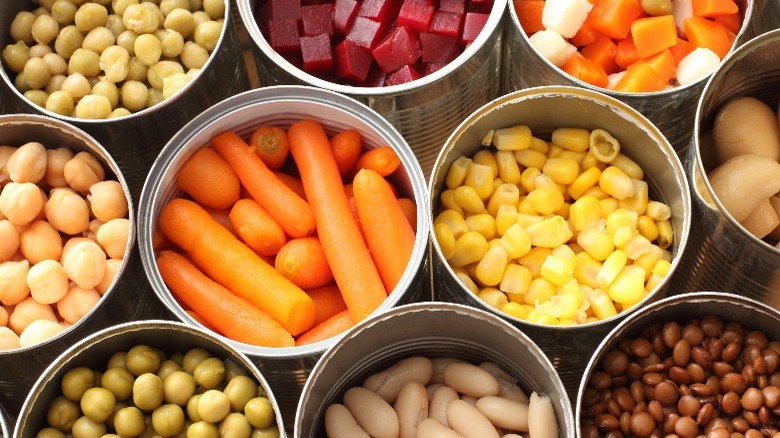How To Determine Whether Or Not To Drain Canned Vegetables
There's nothing sadder than watching your fresh vegetables wilt because you didn't cook them fast enough. Thankfully, people found a way around this problem in the 19th century: canned vegetables. This new food preservation technique revolutionized how we consume our perishable foods because of its convenience, affordability, and shelf-life. While some people might avoid them, canned vegetables are an important way for those in low-income areas or food deserts to still receive nutrition — they can also be delicious.
Part of the reason canned products last so long is because they're filled with preservative liquid and sealed in an air-tight container so that no harmful bacteria can form, which prevents the decomposition process. When you open a can and drain the fluid, you've sped up the clock once more, so only dispose of it if you're prepared to use all the contents within a few days. But should you let that liquid go to waste or use it as a part of the cooking process? Draining or keeping it all comes down to what dish you're cooking.
When you shouldn't drain
Even if a recipe calls for you to drain your vegetables, there's no harm in setting the liquid to the side in case you want to boost certain flavors. If you're sauteing mushrooms for a pasta dish, consider scooping a spoonful of the mushroom juice into the sauce for added boldness and cohesion. The liquid from chickpeas, aquafaba, can be used to substitute egg whites in cocktails. There are a few other instances where it makes sense not to drain.
Tomato-based sauces are a good place to use the juice from canned tomatoes. If you're making pasta sauce, salsa, or ketchup, there's no need to let the tomato liquid go to waste — the acidic yet sweet taste can improve the flavor of your dish as it reduces.
Typically, you should drain your canned corn before cooking with it, but creamed corn is the exception. It's canned with the purpose of being ready to eat once you heat it up, and its rich liquid is perfect for boosting everything from hushpuppies to cornbread. You can also use it to make a Mexican street corn-inspired pudding and other casserole dishes.
If you know your flavors, there's no need to drain the vegetables before throwing them into the blender. The liquid from the can may help you achieve a smoother blend if you're making a soup or curry.
Why you might want to drain your canned vegetables
Most of the time, you'll want to drain in order to use the canned vegetables in their most organic form (dry). The salt and preservatives inside have a high sodium content, meaning they'll add a saltier taste. Draining and running vegetables under water can decrease sodium intake. There's a case to be made for rinsing canned beans because doing so will reduce undesired saltiness and leave you feeling less bloated.
Many recipes ask for vegetables and don't specify whether or not they should be fresh or canned. It often doesn't matter. One mistake you'll want to avoid is not draining your canned vegetables in this scenario because the recipe isn't accounting for the fluid inside the container, so adding it could throw off your entire dish.
Let's say you want to make some crispy rosemary and garlic roasted potatoes using ones from a can. By not draining them, you'll end up with soggy potatoes because they won't be able to properly interact with the cooking oil or oven heat. Whether you're getting ready to grill, fry, or roast — draining is often the safe way to go.


